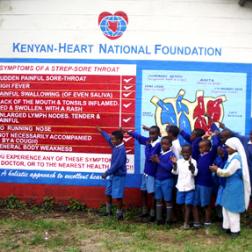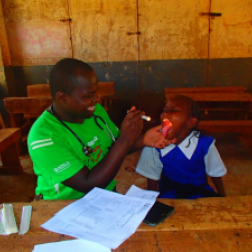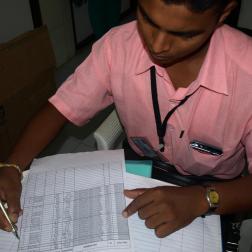
Laboratory
Access to laboratory services is a valuable component of RHD control programs. However, successful programs have been possible with very little laboratory support and in resource limited settings it is not essential that complex laboratory services are perfected before disease control activities begin.
Microbiology for GAS infections may occur in local laboratories or in reference laboratories. Local laboratories providing simple diagnostic tests for routine clinical use. Ideally, these laboratories are located close enough to health facilities that specimens can be transported quickly from bedside to testing facility. Delay in getting specimens to a laboratory makes it more likely that samples will degrade and results will be less accurate.
Access to larger reference laboratories may be needed to support to local laboratories by:
- Providing reference strains of GAS to ensure standardised results.
- Provide expert advice on laboratory standards and training.
- Provide specialist knowledge on sample testing and result interpretation.
- Carrying out molecular typing.
- Liaising with other national reference laboratories and public health bodies.
The role of the laboratory for primary prevention of RF
Supporting the diagnosis of primary GAS infection for primary prevention.
Laboratory facilities are often the least accessible in places where the burdens of streptococcal disease and post infectious sequelae are highest
Throat swab cultures
Bacteria (including GAS) that are causing infection of the throat can be grown in the laboratory from bacterial swabs of the throat
In order to isolate bacteria in the laboratory, the bacteria on the patient’s sample must be viable (i.e. still alive and reproducing). Bacterial viability can be adversely affected by antibiotic treatment of the patient prior to the sample being obtained. For many settings with a high burden of GAS disease, the use of antibiotics prior to presentation at health care facilities is common. Bacterial viability can also be adversely affected by delays in sample processing and exposure of samples to extremes of heat.
Asymptomatic GAS carriage in the nasopharynx also occurs, and may serve as a reservoir of infection. Results need to therefore be interpreted in the context of the patient’s clinical presentation.
Rapid antigen detection tests (RADT)
RADT tests are easy to use, commercial kits that detect specific parts of the GAS bacteria (antigens). There are a variety of kits produced by different manufacturers but the methods used are similar. Sensitivity and specificity is variable between settings, kits and clinical disease.
The role of the laboratory for diagnosis of RF
Providing evidence of preceding GAS infection and providing evidence of systemic inflammation
Evidence of preceding GAS infection
GAS infection results in the production of antibodies specific to antigens expressed by GAS. Antibody responses usually peak 3-4 weeks after infection and stay elevated for 2-3 months. The specific antibodies that are most commonly tested for are anti-streptolysin O (ASO) and anti-deoxyribonuclease - B (ADB) antibodies. Both tests are commercially available.
Tests for inflammation and or infection
Acute phase reactants include ESR and C-reactive protein (CRP). There is variable elevation during the acute phase of the illness with arthritis or carditis. They may, however, be normal when chorea is the only manifestation
Management of RHD & pre-operative evaluation
Information for assessing potential surgical candidates and monitoring anticoagulation
Preoperative evaluation
Laboratory test for potential surgical candidates may include a full blood count, liver function test, creatinine, glucose, urea and electrolytes. Screening for infectious diseases may include tuberculosis, HIV, hepatitis C and malaria. Women with RHD also require access to pregnancy tests.
Anticoagulation
International Normalised Ratio (INR) is a measure of therapeutic effect from the oral anticoagulant drug Warfarin. INR facilities are essential for programs caring for people who have received mechanical heart valve replacement.
Burden of disease
Monitoring the epidemiology and serotype distribution of GAS within a population.
GAS are divided into different types (strains) according to their emm typing. GAS have been separated on the basis of differences in the surface expressed M protein, however the sequence typing of the 5′ end of the M protein (emm) gene is now the preferred method for classifying strains of GAS.95 Emm typing and genetic studies of GAS need to be conducted by specialist streptococcal laboratories. In general these are not clinically significant and are mainly used for research. Rarely, strain analysis may be a useful addition to outbreak investigation but this should be conducted in conjunction with a reference laboratory. Detailed laboratory studies of circulating community strains are likely to be needed for GAS vaccine development. As progress towards a GAS vaccine continues, RHD control programs may have a role in collecting this data.





